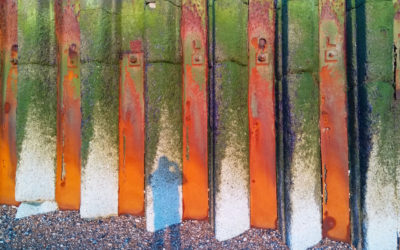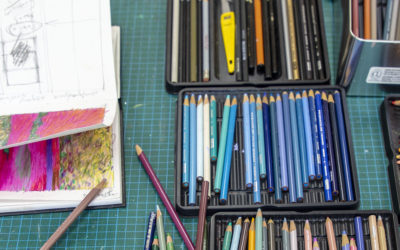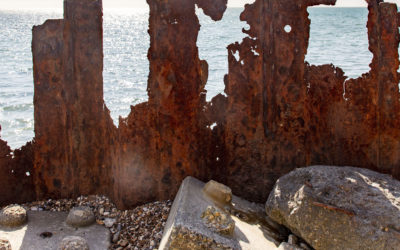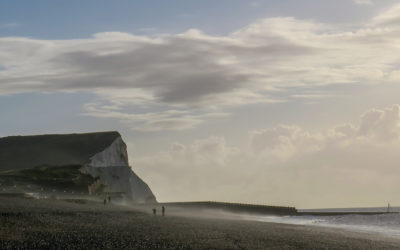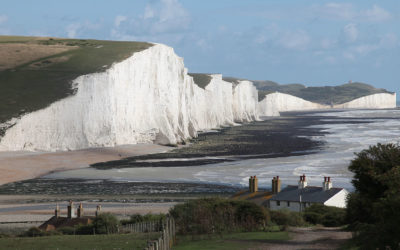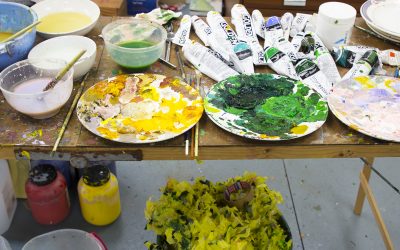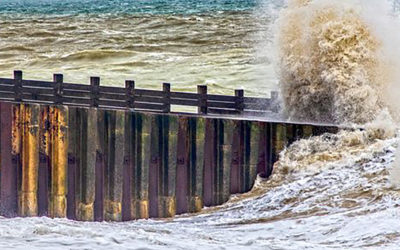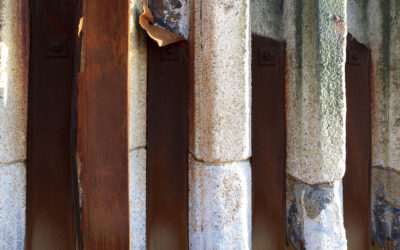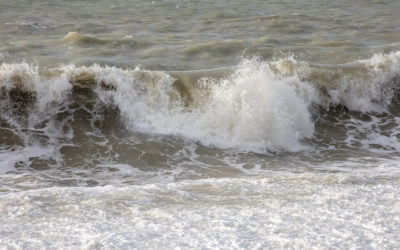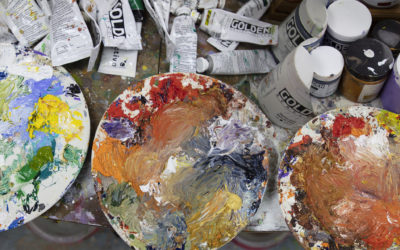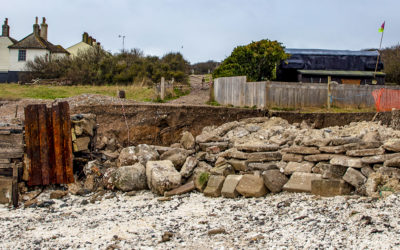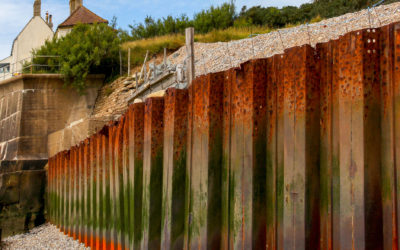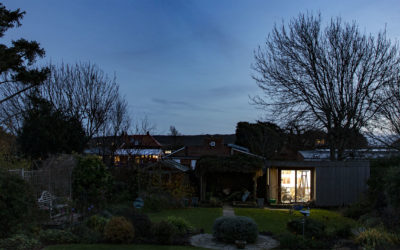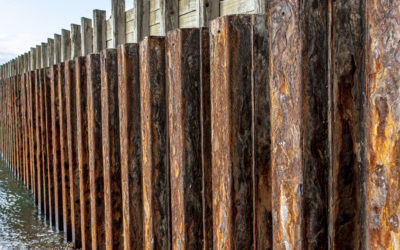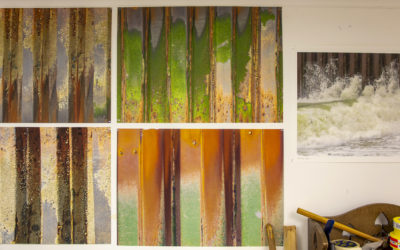Written musings on making art and the results. Life in the slow lane
Trusting or Rusting?
For over eighteen months I have been working from images of my local sea defences, fascinated by the complexities of colour and texture generated by their decay. Sheet metal supposedly protecting the concrete structure that in turn protects a sewer treatment outfall,...
An Artist’s Statement
I first started using a camera ‘as a lad’ and sold my first photograph to an American collector when I was 17, back when images were recorded on film and had to be printed out on paper. I still print the images I use on paper, but now as giclée’s at A2 or A3 on art papers. The camera I used has a large sensor which allows me to enormously enlarge images. This enables me to focus in on small sections and blow them up to examine the textures and colour in a way that I can’t do on an electronic screen.
Art Wave 21
Coming soon is the Art Wave 21 festival for which I will be putting up a little more of a show in the studio, details below: Location 083 • Trust in Rust 2 Headland Avenue, Seaford BN25 4PY Off Southdown Road, 4th house on the right Patrick Goff has been absorbed in...
Under and Overpainting
For almost a year I have worked through the paintings on paper and canvas (drawings and canvases?) producing 14 canvases and some 60+ works on paper. Immersed in the process I have changed my techniques and the way I use paint. Strangely I think the initial impulse...
BRotS Canvas
The beginning of the process
Colour Conundrums
Changing light changes perceived colour and then it is exaggerated in post image processing. Here sea-fret filtered sunlight altered how colour was ‘seen’ both by may eyes but also by teh algorithms in teh camera itself – never forget what you get is filtered electronically according to the aesthetics of the technicians employed by the camera manufacturer. Nothing new here as those who remember the different colour caste that cam with using Fuji or Kodak films/slides
Chocolate Teapot
The canvases of the Cuckmere metal now sit with early studies of the Splash Point metal, and alongside Bergen Harbour, something of a breakthrough piece spurred on by knowledgeable criticism – not the moronic ‘forlorn frustrated sexuality’ critique I had from the Guardian many years ago but a knowledgeable questioning from my peers who also studied at Bath Academy Corsham, my old ‘alma mater’. Their educated and sophisticated appreciation of each other’s work has borne fruit in my case with a positive loosening and change of direction in what I have been doing.
The Old man of the Mountain
. Everything is badly planned here. New housing is proposed but children’s schools are already at capacity and children will be sent over the Downs on roads that often block and isolate the town. There is not enough surgery capacity to cope and the surgeries are themselves are in buildings that need revision – so bad that one practice has publicly threatened to move out of town.
The BRotS paintings on paper
Click here to see a GIF of BRotS Images that are available from the gallery. All are on A1 sized 300gsm paper primed with 3 coats of gesso ground. Acrylic paint, some with oil pastel additions, mostly glazed with a matt glaze. Images are all sized at 27 inches...
Such is Life
I only have one soul, but maybe 9 lives. As a child of two I was rushed to the RAF casualty station in Aden when another child split my lip open throwing a clockwork train at me. At six years old RAF surgeons operated to clear a twisted bowel maybe (who knows)...
Making a Painting – Choosing the Easel
Making a Painting – stretching and priming the canvas
Stretching and priming is the basic beginning of every canvas. You can buy canvases from professional makers, but I prefer to choose the type of canvas I use and stretch it myself, to a size I want to work on. This continues my showing the process that I, as an...
Making a Painting – in the beginning
Ritual Process
The rusting is a metaphor for personal and national life, my efforts to reflect it and present its beauty reflects my own view of our country and its history. Doesn’t all art do this? If that is so, how do you judge much of what is presented as art, in all art forms, today?
Making Waves
Right at the beginning of this series BRotS#1 had a vestigial wave pattern at its base, partly, I will admit, simply to hide the fact the drawing wasn’t quite square. See how intellectual the process can be? Ha! Throughout the remaining explorations and paintings, the...
A Search for Beauty
Realistic or representational paintings can open a door for a viewer, and maybe why, as I have said before, that I try to walk a line between abstraction and representation. The works on paper are closer to realism that you might think, often appearing surprisingly close to the photographic image worked from, making them accessible in theory to anyone visually aware. When I go onto canvas, I try to distil the lessons learned in working on paper into something that stands alone, needing no external reference, its abstraction from reality perhaps a feeling of familiarity. For on canvas I am seeking to find beauty, to extract more beauty from what I see.
The Weather Side
Starting with observation, drawings result. Additional information added by keeping large print (A3+ or A2} colour photographs for colour references on the studio wall, occasionally incorporating photographic prints into the work means that much of the apparent abstractions are just more apparent than they are. Sometimes the photos are collaged to create images that can be around five feet high. In other smaller works I have used collage in addition to colour to show the effects of time. Time also matters and that becomes a concern in the work too, sometimes surfacing in images such as the garden image made from merging a photo from each season to present a picture of a year.
After the Hive?
Is there still a place for the ancient craft of painting? Looking at a painting should change the way we perceive our world. Fine art produces objects of contemplation, interpretations of beauty that change the way we as individuals see our world. Unlike VR or movies, a painting is not an escape from reality, but a mirror held up to it to change the way we see or understand it, a mirror that reflects the view the artist sees but unlike the digital realities, does not pretend to be anything but itself. Paintings enable the viewer to have a dialogue and question themselves on their own view of their world.
Splodging
Here you can see details of the latest paintings featured in previous blogs, showing the technique. I use brushes too, frequently underpainting with brush before working over with the scrapers and then working over again with oil pastel. Love what I am doing ( to paint is to love again) and love the colour interrelationship that are created by the layering. I admire other painters who are into paint, like Tom Phillips, and those who extend how we look and use our eyes. I hope I make people look afresh at the world around them, use their eyes more to see the beauty we live with daily in often unexpected places. I hope you enjoy.
Cuckmere Coastguard Cottages
Some of what I know is hearsay, some from simple observation, some from public reports. It seems that the Agency, given the job of protecting Britain’s coastline, was making choices about where to spend its limited funds (apart from on offices and administration of course). A while ago it announced it would no longer take any action on the Cuckmere but would allow the area between the sea and inland villages like Alfriston to become tidal marsh land. It explicitly would not pay anything for the defence of the Coastguard Cottages despite their worldwide fame as an icon of the English coast adjacent to the Seven Sisters.
Cuckmere #BRotS
Including pieces of net and the shingle rocks that had holed and forced apart the metal plates drew me down a path to painting realistically where before, in just exploring the colour I had been able to delight in exploring paint and colour, textures, transparency and painterly concerns. Working from a photograph I took of the metal defences and the cottages beyond I tried to maintain the exploration of colour texture etc, and to contrast them against the white of the cottages, all on a large canvas.
Out of the Blue
Whilst I am no longer working in the small tight confines of taped off areas characterised by the ‘Seaford Fuchsia’, I am still taping out areas to work on. The thick paint raised issues with getting a good edge as the corrugations I create in application allow ‘bleeds’ of adjacent colour. To a certain extent I allow this as it reflects the rough rusty edges on my subject, but the issue is compounded by the slow drying, where the thick paint can be dry to the touch by have enough damp in it to reject the tape. This seems more of an issue on canvas than it is on paper, despite both having the same application of gesso ground.
Splash Point
I tread a line between abstraction and realism in exploring the colour. Someone described one of the resulting canvases as ‘impressionistic’, and maybe that is a fair comment, but my overriding concern is not to present reality but to show how the colours intersect and the visual richness that this ageing structure presents for our delectation and delight.
Trust in Rust
BRotS – the Bridget Riley of the Shingle, an homage and an inspiration is rusting metal battered by wind and weather , but especially eroded by tons of sea water from Channel waves carrying their shingle like slingshots. Rust and erosion a constant explosion of colour


